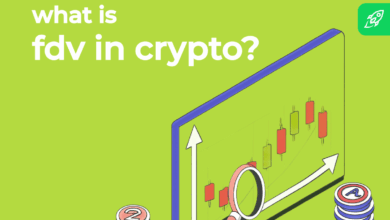Can NFTs Be Securities?

In this article we will examine:
- What is an NFT?
- What is security?
- What is a commodity?
- Why did the SEC get involved?
- Whether NFTs can be securities.
- How to apply the Howey test.
- Friel v Dapper Labs – A case analysis.
Non-fungible tokens (NFTs) have been around since 2014. Soon after they emerged, they managed to gain a lot of attention due to several high-profile sales.
For example, Beeple’s digital work of art ‘Everydays – The First 5,000 Days – sold for a jaw-dropping amount of $69.3 million. The NFT hype further expanded due to the popularity of certain NFT projects such as the Bored Ape Yacht Club, CryptoPunks, and CryptoKitties.
Just in 2020, the NFT trading volume amounted to approximately $21.7 million, and only a year later it doubled to $40 million. High-profile sales have made the prospect of getting rich from NFTs a popular topic among all kinds of artists and investors.
Apart from these prominent sales and creating a new market for digital art, NFTs played a huge role in empowering artists and cutting out the middlemen. Crypto and NFTs managed to disrupt the music industry by changing how artists are funded and opening new revenue streams. We have examined this disruption in our ‘How NFTs might revolutionise the music industry’ article.
Many NFT buyers are merely interested in supporting their favourite artists and incentivised by the idea of obtaining digital ownership. NFTs made their breakthrough in gaming and sports as well. On the other hand, a significant portion of buyers are investors who think of the NFT market as the next gold rush of the fourth industrial revolution.
The regulation of virtual assets in the United States is primarily housed under federal law with the Securities and Exchange Commission (SEC) and the Commodity Futures Trading Commission (CTFC). However, each state has its own securities law as well, which may add up to having different requirements to that of the federal law.
While NFT projects are appearing every day, questions of whether NFTs are securities and whether the U.S. Securities and Exchange Commission will deem them as securities are swirling around. Determining NFT securities has far-reaching implications; that would instantly subject them to US federal securities laws.
Even though we are going to examine US regulation, the applicability of NFTs across different industries and business use cases amounted to regulators asking the ‘one-trillion-dollar’ question: Are NFTs securities? The question does not, and it should not have a straightforward answer.
The abbreviation NFT stands for ‘non-fungible token’. As the name suggests, we are talking about tokens that aren’t fungible. Fungibility is merely a word that describes an item, either a physical asset or virtual asset, that can be exchanged by another identical item. For example, money is fungible because it is interchangeable. Cryptocurrencies are fungible as well since they are new forms of digital money that can be exchanged.
NFTs are non-fungible and therefore, cannot be exchanged for an identical digital asset. In other words, each NFT is unique. That brings us to another trait of such tokens- digital ownership. An NFT is a digital record that proves ownership of a digital asset.
Given its name, an NFT isn’t fungible; it cannot be exchanged for an identical item, it is designed to reflect ownership of a unique item for which there isn’t an interchangeable equivalent. Keep in mind that it is a record of ownership only, and not the item itself. NFTs indicate where the digital asset exists within the blockchain or the internet in the form of a website link. NFTs can also represent ownership over physical assets that exist outside of the digital environment.
Blockchain technology is what contributes to the value of non-fungible tokens. Because NFTs are created by decentralised blockchain technology, there are immutable records of digital ownership. To put it simply, once created the information on ownership cannot be changed.
Traits such as being unique, immutable, and irreplaceable add up to the NFT’s intrinsic value. If you want to find out more about the intrinsic value and scarcity of these tokens, why not read this article: ‘How Does an NFT Have Value?’
Traditional securities refer to financial assets that can be traded. As a financial instrument, it has a certain monetary value. Think of stocks, options, bonds, futures, and banknotes. These are all common examples of securities.
As you can notice, securities are usually fungible. The ten stocks person X buys are just as good as the ten stocks acquired by person Y. These stocks can be easily interchanged. According to these traits, at first, it seems unlikely how NFTs might run into the securities regulatory regime.
There are four different categories of traditional securities.
Equity securities refer to a partial ownership interest in a legal entity. In particular, they are financial assets that reflect the ownership stake held by shareholders in a certain company.
If equity securities sound a lot like stock, that is because they are. Typical examples of equity securities are common and preferred stocks. These kinds of stocks differ on the basis of the rights they give their holder. Holders of equity securities may have the right to vote, receive dividends, and receive proceeds of liquidation.
For example, you can buy shares of a publicly traded company on the stock market. When you buy them, you have essentially bought an ownership interest in that company. You can hold them and exercise your rights. That means you can vote and receive profit distributions.
Debt securities are basically loans with pre-established terms such as size, interest rate, and renewal date. Governments and corporations issue them. Bonds represent a common example of debt securities.
Simply put, debt securities are something like reverse loans – investors provide funds to governments and corporations in return for interest payments.
As the name suggests, hybrid securities encompass elements and features of multiple types of securities. They are mostly a combo of debt and equity securities.
A common example is the convertible bond. In other words, it refers to debt securities that can transform into a predetermined number of shares.
Derivatives are a type of security whose price derives from the value of an underlying asset. It is a complex type of financial security set between two or more parties. These securities are considered a form of advanced investing.
For example, when you buy oil futures, you are not purchasing the oil itself. Instead, you are buying the right to buy oil at a specific price later.
If you start reading on the Internet about NFT securities, you will probably bump into an analysis of whether these digital assets can be commodities instead of securities. Therefore, we should quickly explain what commodities are.
A commodity may be defined as a basic good used in commerce. It includes all goods and articles, services, rights, and interests which are the subject of a contract for future provision or delivery. The basic features of such contracts involve an agreement to purchase or sell a commodity for delivery in the future at a price that is determined at the time of the agreement with fulfilment affected by physical delivery. The commodity must be traded by persons and companies registered with the Commodity Futures Trading Commission (CFTC).
Despite the question of what physical delivery should mean in the context of NFTs, these tokens may fall under the above-mentioned broad definition.
You may wonder why the Securities and Exchange Commission (SEC) wants to be involved if we can somehow fit NFTs into commodities.
The potential answer lies in the very nature of NFTs and blockchain technology which is somewhat complex. Take, for example, fractionalization. One of the most popular examples of the business uses of NFTs currently is linked to real estate. Imagine a property, divide ownership of the property into, let’s say, 100 parts, and mint each one onto an NFT. Therefore, a property could be sold to smaller investors who usually cannot buy the property as a whole. Therefore, fractionalized NFTs can be understood as small portions of investments.
Whether an NFT is a commodity or security may depend on the facts and circumstances. If such a token represents merely ownership of a digital item such as a video game collectible or a piece of digital art, then it may not be a security after all. In case NFTs are promoted as speculative investments accompanied by suggestions that they may increase in value, then it can be considered an investment contract and a security.
The rapid growth of the NFT industry, along with the expansion into the metaverse has opened the doors to associating and integrating virtual assets into a new digital world, making it even more likely that such an asset class could be commercialised and potentially subject to securities laws.
The SEC has evaluated digital assets the same way as traditional assets to find out whether they are securities or not. Unlike Initial Coin Offerings (ICOs) NFTs have not been the subject of wide interpretative guidance. The question of whether and when an NFT is a security is still a bit unclear.
The Securities Act of 1933 and Securities Exchange Act of 1934 are broad enough to cover some business uses of NFTs. In a number of past enforcement actions, the SEC has argued that offerings of digital assets qualify as securities because they are investment contracts.
As mentioned above, deeming NFTs as securities depends on individual characteristics and circumstances. If an NFT merely presents a piece of art or collectibles, they are not securities. Such tokens are simply stand-alone goods whose value can be determined at a sale. On the other hand, many NFT projects are starting to introduce complicated features including a variety of digital property rights, such as the fractionalization of NFTs. The U.S. Exchange Commission considers them fungible, single fractionalized NFTs can be exchanged for one another as they are all part of the same NFT.
Remember what we said above about securities being fungible? NFT issuers should be aware of these circumstances because issuing fractionalized NFTs could be viewed as investment contracts under the securities regulatory regime. Such NFT transactions may qualify as securities.
Another trait that may put NFTs into the securities box is linked to their royalty feature. The royalty feature is built into a smart contract. It automatically transfers to the original NFT issuer a portion of the sale price each time that NFT is sold. The danger lies in the fact that the original NFT issuer could choose to sell such rights to future royalties on a secondary market.
The SEC Commissioner Hester Peirce warned that participating in staking and governance rights could also count toward a security classification. If we take a step back and think about how companies work, we can note that stockholders tend to vote on governance to determine the direction of their common enterprise. A particular class of stocks gives them voting rights.
Are NFTS securities? Well, it depends. The next thing that we should examine is the so-called Howey test, a regulatory standard used to determine if a transaction has an investment contract. If NFTs can pass this test, they can be deemed securities.
The case law definition of securities stems from the 1946 case of SEC v W.J. Howey Co before the U.S. Supreme Court. The Court set out a four-part test to determine whether an investment is a security.
Therefore, an investment is a security if:
- It is an investment of money.
- In a common enterprise.
- With a reasonable expectation of profits.
- To be derived from the efforts of others.
While many tokens won’t pass this test, it is not really a surprise why the SEC considers tokens that fund blockchain projects and ICOs as securities. As for NFTs, let’s do the Howey test in relation to fractional NFTs. Someone is selling a property that is going to be owned by a group of small investors who expect to make a profit from either the revenues of sale or some other management entity, and who will maintain and run it together.
In February 2023, a suit alleging that NBA Top Shot NFTs are securities survived the motion to dismiss.
The case is about Dapper Labs violating U.S. federal securities regulations by offering NBA Top Shot Moments as NFTs without a registration statement. Dapper sold Moments, tokens that featured a video clip of influential moments in past NBA games with a unique serial number, on the NBA Top Shot Platform. The platform was allegedly operated by Dapper Labs.
The defendant has created a private blockchain to provide technological support for the Moment NFTs by hosting the NBA Top Shot platform, and recording NFT transactions that occurred on a secondary marketplace.
This case represents the first NFT-related application of the Howey test to determine whether Moments can be deemed as investment contracts. Keep in mind that the Court itself said that the analysis is based on specific facts and circumstances.
The final judgement is not here yet, because the analysis was needed to decide whether to dismiss the complaint or not.
The Court went on with the Howey test and determined the four components as stated below.
This element is not in dispute. The court stated that it was adequately pleaded.
There was a pooling of funds tied to the success of the entire venture. That is why the Court held that there was a horizontal commonality. Generally, a horizontal commonality exists when the investors pool their assets in an enterprise and agree to share profits and risks. Think of it as a group of investors.
The Court went on and stated that the buyers’ fortunes were tied to the defendant’s overall success since it controlled the private blockchain where those NFTs existed. Once purchased, Moments could only be sold on the Top Shot marketplace.
The Court asked itself if hypothetically Dapper Labs went out of business, what would be the value of Moments? Since the answer is that they would be worthless, the Court held that this makes them different from rare collectibles.
The Court confirmed that Dapper Labs’ public statements and marketing activities incentivized purchasers to expect profits. For example, Tweets recounting statistics of Moments’ market performance with a rocket ship, stock chart emojis, and a money bag that added up to the idea of a financial return on investment.
As the law needs to keep up with the digital world, emojis seem to be valid evidence in the courtroom.
The Court rejected Dapper Labs’ argument that since buyers exercised control over their NFT portfolio, there was no expectation of profits based on the efforts of the defendant. However, the Court found that Moments’ values dropped when the defendant halted trading on the marketplace and that it had control over the marketplace.
Due to these facts, the Court found that there was some reason for the plaintiffs’ allegations and refused to dismiss the complaint.





